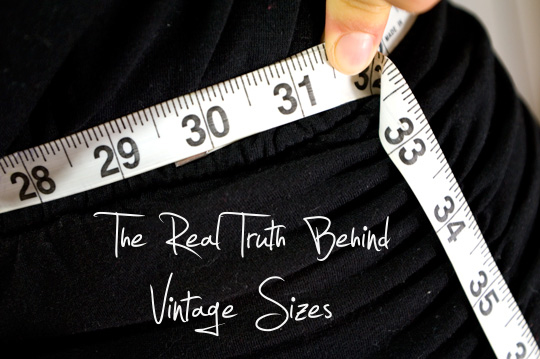
“How do I know my vintage size?” is one of the most common questions I’m asked by vintage lovers.
When I released my e-book, the 100 Best Vintage Shops Online, reader Xia asked me to address where to find plus-size vintage.
She said in her message to me, “My only critique [of the e-book] is I think there needed to be something in there for plus-size girls, and how they can also buy beautiful vintage, as I find that a big issue when buying vintage clothes … nothing ever fits.”
My heart broke after reading what she wrote. I feel I did readers of the book a disservice by not addressing the plus-size market and where to find great vintage for their body types.
However, the reason I didn’t address it in my e-book is because I don’t believe in “plus-size.” It’s like calling me, a 5’9″ woman, “tall size.” There is fashion for every body type and personality. We shouldn’t feel subjected to using a marketing term to discover great vintage.
That’s why today, I decided to ease your frustrations with the real truth behind vintage sizing, and why women of every single modern body type are going to have some degree of difficulty finding a perfectly fitted garment.
Thanks to great guides on eBay about finding plus-size vintage and Etsy stores like Curvy Elle specializing in plus-size styles, vintage lovers of all beautiful body types have options. Even us “tall size,” “petite size,” “flat size,” “stout size” … you get the point!
Dressing for confidence is the key to any outfit. Have a question about what looks good?
Send me a message of vintage love by saying hello on Twitter, Facebook, Instagram or subscribing to my newsletter.
#vintagelove,
Sammy
Source: Vintage Ad Browser
1. We Don’t Wear Girdles
Until the 1960s, it was expected that a lady wore her girdle, waist cincher, bullet bra or corset. These devices were like today’s modern day Spanx, except with more pressure and body contouring. While Spanx is great for smoothing out those problem areas, a girdle or waist cincher literally changed the body’s shape to create that hourglass silhouette of a teeny tiny waist line.
So when opting for a 1940s through 1960s garment, a New Look inspired design is best worn with a vintage body shaper below for optimal fit. However, this means a modern girl has to spend more time getting dressed, sit and walk a certain way so that the device is most comfortable and when choosing to use the bathroom, planning for at least an extra 5-10 minutes to get the contraption on and off. Not my idea of fun.
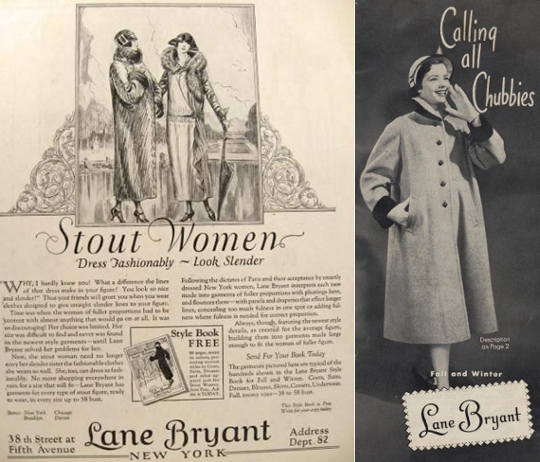
Source: Vintage Ad Browser
2. We Aren’t Built the Same
While I’ve yet to find a source of verifiable statistics, it’s common knowledge that a woman’s body has changed significantly in the past 80 years. Not only are we eating more daily calories on average than our vintage relatives, but because nutrition and healthcare are so improved, children are born healthier and stronger. Increased height and weight is the number one result.
I can’t control the fact that I’m 5’9” and to some degree, we can’t control the fact that we’re blessed to have an abundance of food to sustain and fuel our bodies.

Source: Big Stock Photo
3. Clothing Follows Different Sizing Charts
The debate over Marilyn Monroe’s size is evidence enough: While Ms. Monroe may have been a size 12, in modern day sizing she was closer to a 6. When I wear the 1960s, for example, I usually fit into about a size 12. Plus with so much vintage clothing handmade, the odds of even finding a size tag are next to none.
The sizing charts have shifted over the years because it wasn’t until the ‘90s that the size “0” even existed. Plus, as brands began adopting vanity sizing (which means you are a size 2 at one store but a size 8 at another), comparing sizes became like comparing apples and oranges. Simply impossible.
As my e-book the 100 Best Vintage Shops Online explains, a girl needs to know her measurements before she can buy vintage online. Knowing your bust, waist and hips are the best rules of thumb so that you can truly compare your size to the listed measurements of a garment.
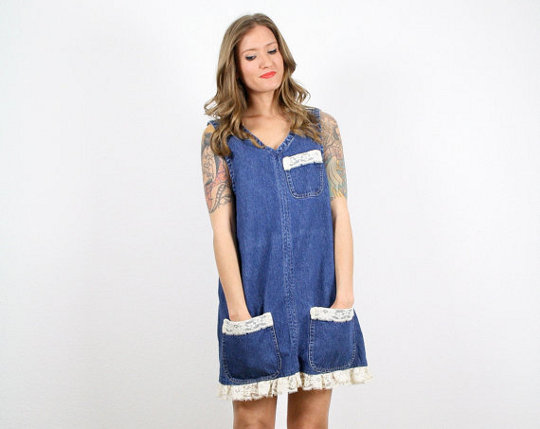
Source: Denim Jumper by Twitch Vintage
4.) We Wear More Than Just Fitted Styles
Turn on the blogosphere and you see that free-spirited fashion runs the gamut today. Anything goes, be it loose or long, short or sheer, fitted or flowing – the democratization of fashion means there’s a designer for every girl’s fashion personality.
But in the vintage eras, options were less. Instead of blogs, we had magazines. Instead of the Internet, we had massive catalogs. Instead of one-size-fits all we had tailored dresses by private dressmakers. Instead of Rue La La and other online sample sales, we had full price garments or for a fraction of the price but quadruple the work, we had sewing patterns to make clothing ourselves.
All in all women of a vintage century wore what was in style because options were limited. And what was in style from the ‘40s – ‘60s – the sweet spot for most vintage lovers – were fitted frocks that were made or ordered to fit a woman’s body to a tee.
While similar styles obviously exist in the contemporary market today, they’re made from stretchy (thereby body-forgiving) materials like Lycra and Spandex that weren’t invented until the 1970s. There weren’t styles designed as “one size fits all” or in catch-all sizes like small, medium or large.
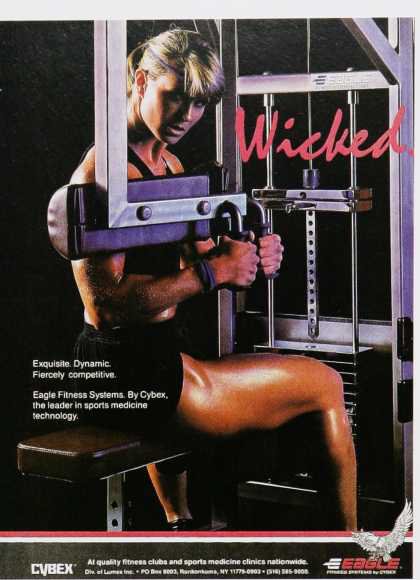
Source: Vintage Ad Browser
5.) We’re Getting More Physical Than Ever
Part of the reason vintage might not fit you as well as a contemporary style is because that Tae Bo class mixed with lifting weights and weekly swim sessions has actually put more muscle on your body than the average vintage lady would have had.
For example, ’70s Diane von Furstenberg wrap dresses are notorious for having “tiny arms” that seem impossible to fit, despite the waist and bust fitting like a gem. Woman with Michelle Obama arms are better off buying dolman, angel or kimono sleeved garments or simply opting for a sleeveless style altogether … to show off those hot 21st century arms!
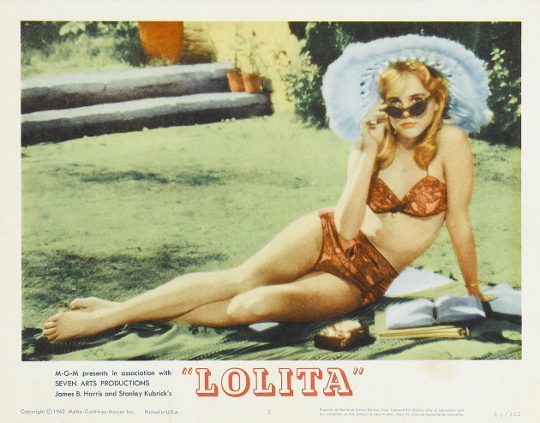
Source: Lolita by MGM
6.) We’re Accidentally Trying to Fit Teen Clothing
The most common moan I hear about vintage dresses is in regards to the waist size. When a dress is in the waist-size range of 20 inches to 25 inches, chances are the dress was made to fit a teenager or young 20-something girl.
You may be 35 years old and absolutely in love with that chiffon party frock from the ‘60s, but honey your body is never going to return back its 17-year-old state. And that’s a good thing, because if it did, we’d all be quite worried about you!
So be easy on yourself when the vintage dress of your dreams is cut too small for your contemporary size, because most likely you’re eyeing up a dress originally intended for the body of a pubescent girl, and not a beautiful, perfect woman like you.
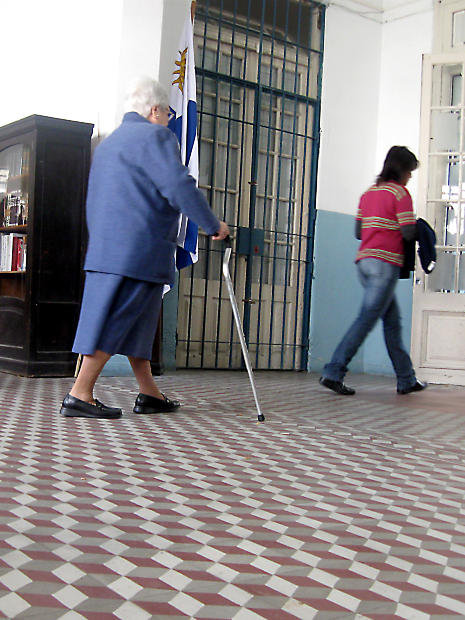
Source: Big Stock Photo
7.) We’re Buying Vintage from Advanced Closets
Not all vintage was purchased from the closet of a 20-something young woman. Oftentimes we’re purchasing pieces from the estates of wealthy woman to-do who may have purchased that garment in their sixties to eighties!
Osteoporosis is real and the older we get, the smaller our bone structures can get, too. My grandmother used to be 5’10” but has since shrunk nearly an inch and a half. Additionally, and while this isn’t always the case, I’ve noticed women of an advanced age lose weight and can become smaller and weaker in general.
So considering a woman of advanced age may be the size of a petite woman 40 years younger, it makes sense that girls of modern age will have a hard time fitting into garments from their closets.
MORE VINTAGE SIZING
GRAB THE E-BOOK: The 100 Best Vintage Shops Online
TIPS: How to Wear Vintage for Your Size
FROM OUR PARTNERS
SHOPPING: How to Buy Plus Size Vintage on eBay
YOUR SIZE: How to Determine Your Vintage Size by Vintage Swank
ADVICE: More Tips on the Reality Behind Vintage Sizes by Hubpages

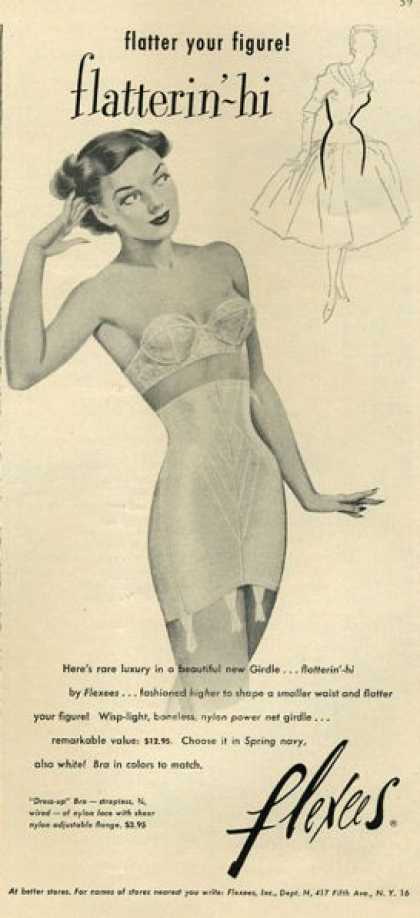
Another point that’s important is that hand-me-downs were a much bigger deal in generations gone by. Though it was more of a big deal for much older styles (say 1920s and before), it’s still something to keep in mind for 40s styles and beyond. If you were of an “average” size, a lot of your older clothes would be handed down as you changed size or didn’t want the item any more. Similarly, if you were a larger woman than many of your friends/family, your clothes would be handed down (and altered to fit smaller friends and family). However, if you were on the very petite side, your clothes might not have gotten passed on to anyone else (because they couldn’t fit them). So often, some of the smallest sizes are the ones that are still in circulation . . . because fewer people could use it secondhand.
Lynn, this is such a fabulous point and I’m so happy you brought it to my attention. That makes sense now why the smaller sizes are in greater circulation. I appreciate you taking the time to share this with my audience and our fellow #vintagelovers. Thank you!
I love this article. Knowing your measurements is really the way to go!! Forget subjective sizes, knowing your true size makes buying clothes so easy!
Becky :)
It can be jarring to realize your true size, but the clothes must fit to look good. I have squeezed into things and Becky, not a flattering decision in fashion!
Great post, Sammy. Interesting subject, isn’t it? It brings up so many issues.
Like you, I’m tall (5’10’) and have found that many fitted, vintage waistlines fall somewhere around my lower rib cage if you know what I mean. Because I sew, I love working with vintage patterns and making the necessary alterations in length.
Vintage 70s bohemian styles work best for my personality and body type. I know it’s been said that “if you remember it, you shouldn’t wear it” but I don’t worry about such things. I say if it looks good and makes you feel good, then go for it.
Linda, thank you for not fearing wearing the trends that you may have grew up with. I think that is a silly rule of thumb and perhaps something I should write about. thank you for inspiring! I am checking out your blog now. Thank you for spreading #vintagelove, and for owning your height! Like my grandmother used to say, “Shoulders back and stand up straight!”
“Shoulders back and stand up straight!” Oh, Sammy! How many times have we heard that? How many times have we NEEDED to hear that. SOOO true!
As I sit here typing, I’m trying to do just that! No slouching! We all need an etiquette class in posture, I’m afraid. Some old-school traditions should return. I wouldn’t mind attending “finishing school” like my great aunt did in the ’30s, to be honest with you!